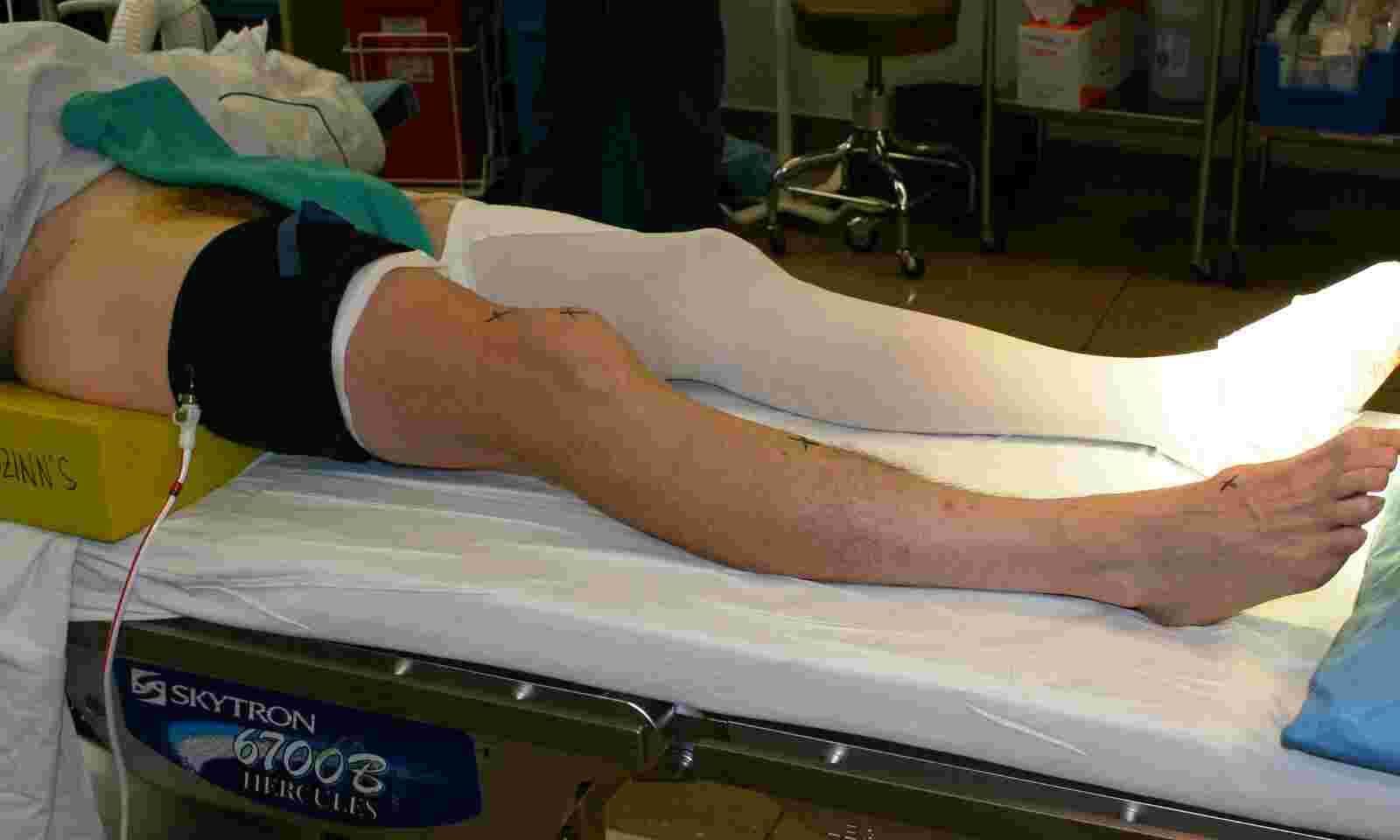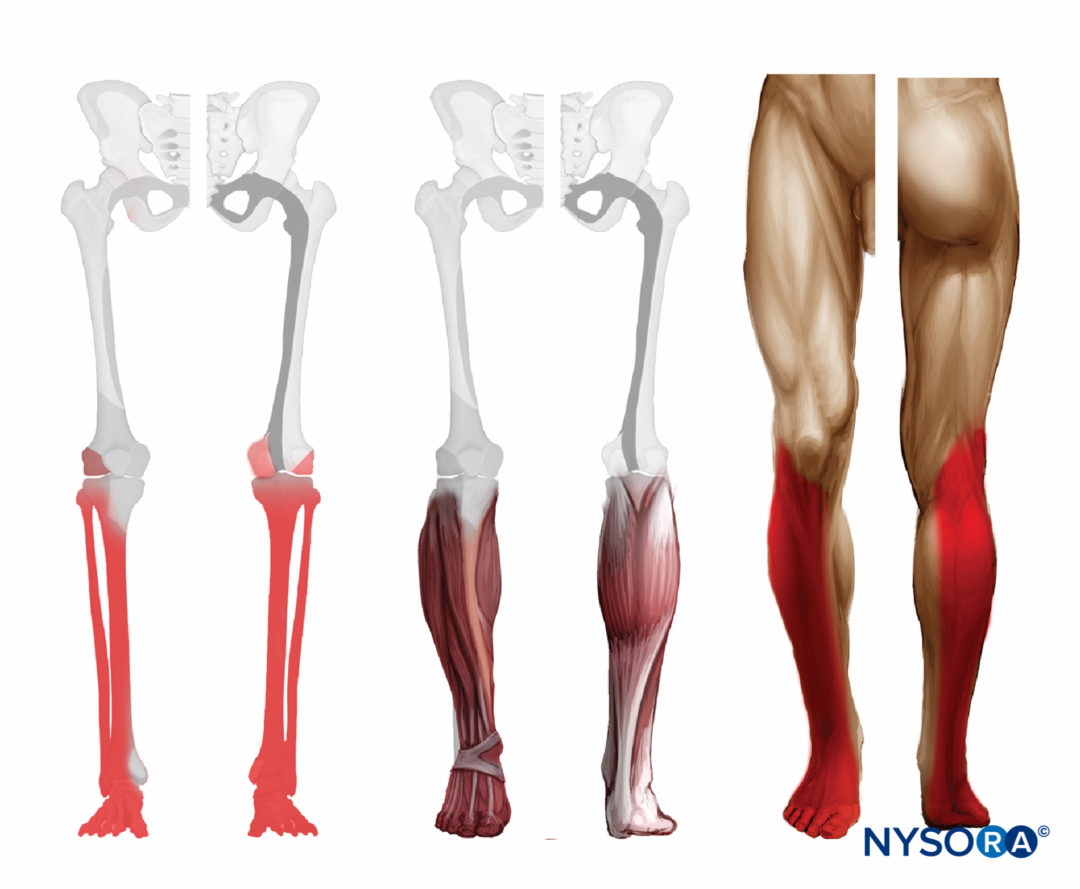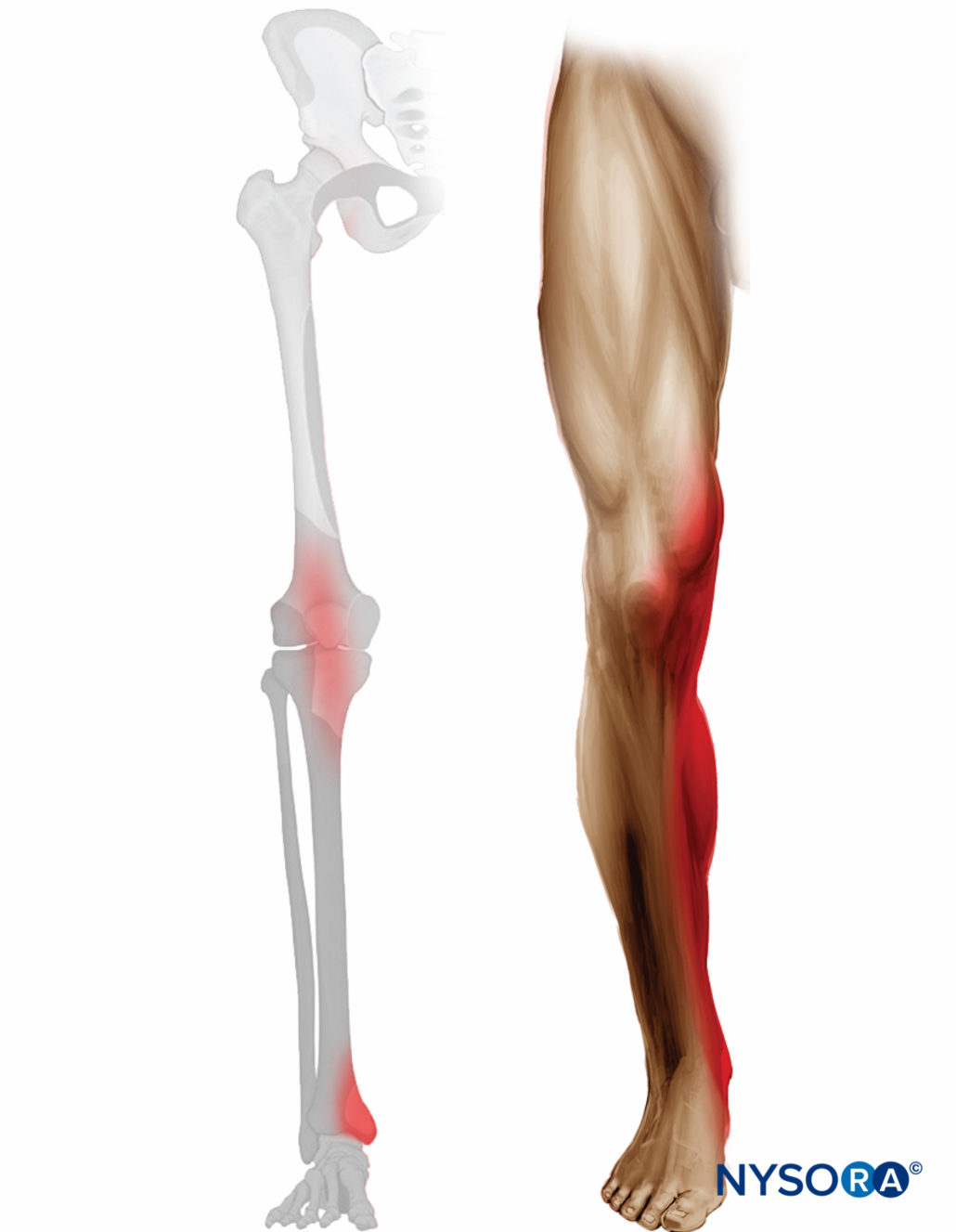Case 2a
Case 2a#
35 year old man had a fell while climbing a tree and suffered left trimalleolar ankle fracture.
What kind of anesthetic would you offer? Choose the best answer(s).
A. General Anesthesia
B. Femoral Nerve Block
C. Popliteal Sciatic Block
D. Saphenous (Adductor Canal) Nerve Block
E. Fascia Iliaca Block
Answer
A. General Anesthesia + C. Popliteal Sciatic Nerve Block + D. Saphenous Nerve Block
Popliteal sciatic catheter + saphenous (adductor canal) single-shot for intra-operative & post-operative analgesia.
General anesthesia often desired by surgeons because if they use a thigh tourniquet, it is usually above the level of the block & not covered. These can also be 3+ hour surgeries and we don’t want the patient getting light and accidentally kicking.

Explanation:
A. General Anesthesia: Yes, often desired by surgeons. Note that if surgeons use thigh tourniquet, it will not be covered by our block.
B. Femoral Nerve Block: Could do it, but not necessary. Saphenous nerve block adequate for ankle without blocking quadriceps muscles.
C. Popliteal Sciatic Block: Yes. Sciatic nerve covers around 80% circumferentially around ankle. It misses the medial side of the ankle/leg which is the saphenous distribution. We often place a catheter for post-operative analgesia in patient.

D. Saphenous: Yes. Saphenous nerve covers 20% medial side of ankle/leg. This nerve is often blocked at the adductor canal, which is in thigh, distal to where saphenous splits from femoral nerve. Often single-shot block, but could also place catheter.

E. Fascia Iliaca Block: No. This is a high-volume plane block that covers femoral, lateral femoral cutaneous, and obturator nerves. Useful for hip surgery and skin grafting from the thigh, but limited utility for covering ankle. Would only cover the saphenous distribution for this surgery.
